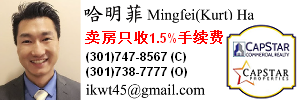
何祚庥院士:望李政道杨振宁有生之年能化解恩怨
文章来源: 综合新闻
10/10/2021
Oct 10, 2021
杨振宁和李政道,这两人的名字很多人都知道,他们两合作在1956年提出弱相互作用中宇称不守恒定律,从而在1957年获得诺贝尔物理学奖。而且当时获奖时,两人都还是中国国籍,所以说,他们两是最先获得诺贝尔奖的中国人。
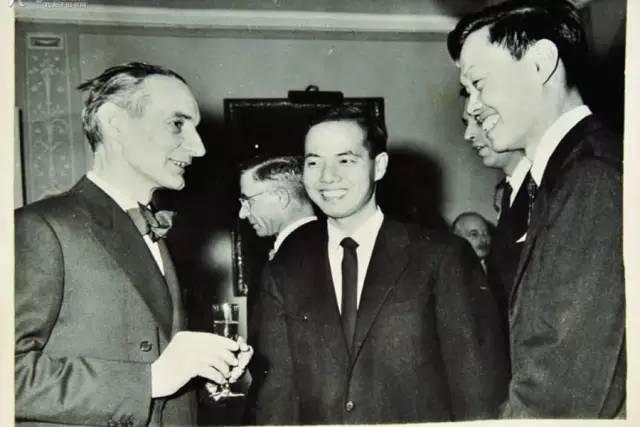
然而,后来大家都知道,杨振宁和李政道两人分道扬镳,没有一起合作继续创造更多更大的成就。之后杨振宁在物理学领域做得风声水起,而李政道却似乎没有再做出更大的成就。这一切到底都是为什么?
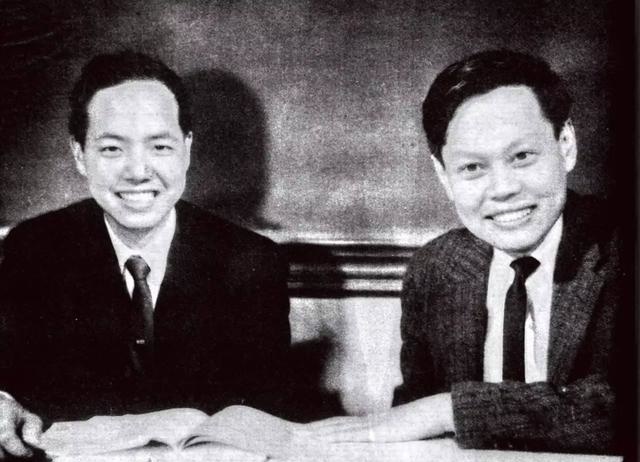
今天,我们就来给大家说说两人之间发生的一些小事,以及后来为何会在学术上存在较大差距。
01
杨振宁和李政道两人曾经都是西南联合大学的学生,算是校友。杨振宁比李政道高两个年级,也比他大了4岁,由于都是学习物理,而且成绩都非常好,学霸之间的交往很自然就开始了,后来两人都赴美留学。
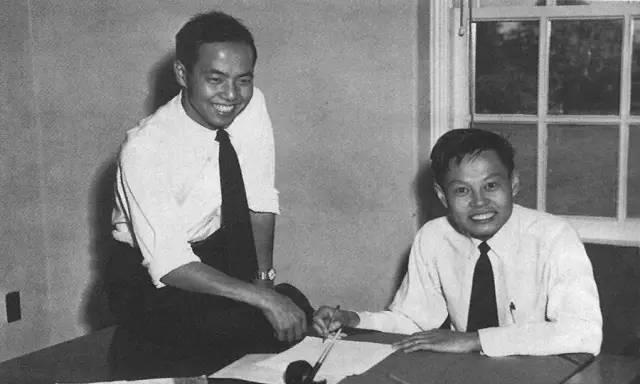
杨振宁从芝加哥大学博士毕业后到普林斯顿工作,得知李政道在加州伯克利大学并不是很愉快,于是杨振宁找到当时的院长奥本海默(美国原子弹之父)帮忙,于是李政道来到了普林斯顿,两的合作也正式开始。
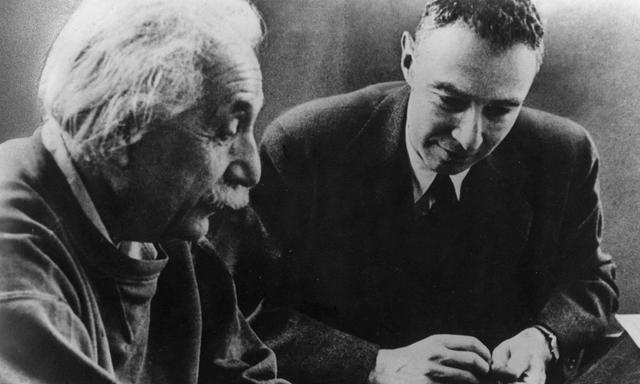
两个极具天赋的年轻人,每天一起学习工作,很快就做出了成绩。1952年,两人合作撰写的有关“统计力学”的论文,让很多人知道了这两位年轻人。当时物理学界的泰斗爱因斯坦也关注到了这两位年轻人,邀请他们到办公室当面交流了一个半小时。
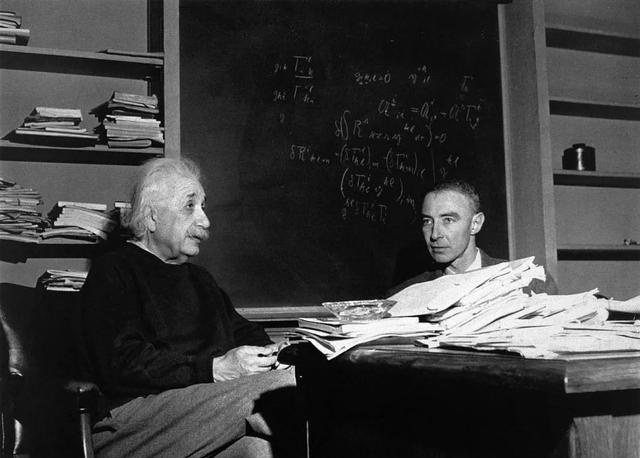
02
奥本海默曾这样形容杨振宁和李政道:
李政道和杨振宁坐在草地上讨论问题的画面,是普林斯顿最令人赏心悦目的风景。
然而,这样的风景并不长久,两人合作的科研正蒸蒸日上的时候,却发生了不愉快,而引发这样的不愉快,却仅仅是因为一件事,那就是两人在论文和科研成果中的“排名问题”。
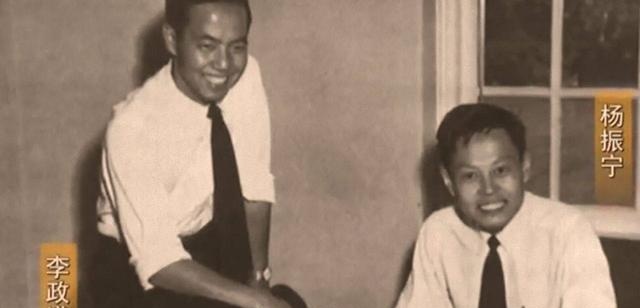
在发表论文时,李政道认为应该是”李政道和杨振宁”,因为按照当时惯例,作者署名应该按姓氏英文首字母顺序排列。杨振宁认为自己比李政道大4岁,如果李政道不介意,他希望将自己名字排前面。
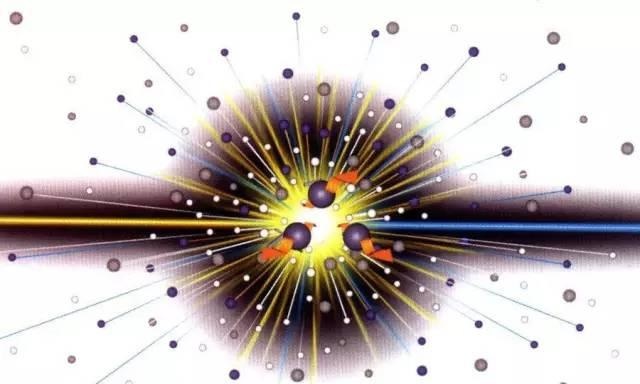
刚开始李政道对杨振宁的提法很惊讶,但为了不影响双方合作,第一次勉强同意了。但是,在第二篇论文时,李政道提出必须按照国际惯例自己名字写在前面。至此,两人关系彻底产生裂痕,后来两人在普林斯顿再也没有合作发表过论文。

03
李政道对杨振宁心怀不满,决定离开普林斯顿,到了哥伦比亚大学任教。原本以为两人不会再合作,但却在一次偶然机会里,李政道看到杨振宁的一篇论文中存在疑点,他联系杨振宁并指出了这个疑点,两人才再次合作并发表了一篇重要论文,这次合作为后来他们发现宇称不守恒奠定了基础。

在1956年合作提出了宇称不守恒定律,后来在吴健雄博士的帮助下并验证了这个理论,最终两人同时获得了1957年度的诺贝尔奖。然而遗憾的是,这次获奖却是两人决裂的真正开始。
(一)两人争夺最先发现权
这么重量级的理论,最先发现权当然是值得关注的。然而两人的说法却各执一词,李政道认为是他最先提出然后说服杨振宁一起研究出的成果,杨振宁说法完全相反。
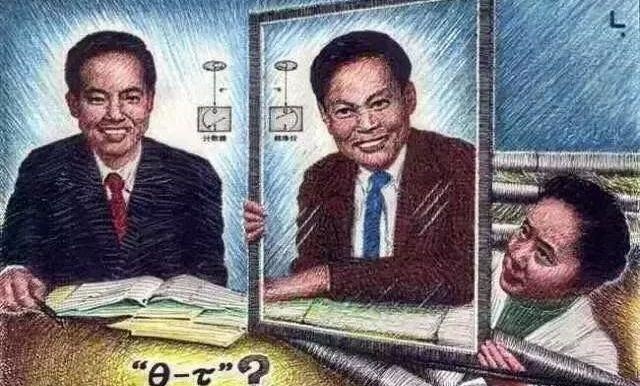
(二)领奖排名顺序问题
在诺贝尔奖颁奖时,杨振宁提出希望按照年龄顺序在李政道前面受奖,而且他夫人杜致礼也希望在晚宴时让国王作陪。也就是说,领奖时杨振宁第一李政道第二,晚宴时杜致礼第一,杨振宁第二,李政道和夫人排后面。这让李政道非常不满。为此,杨振宁还特意去求李政道夫人秦惠箬,秦惠箬觉得这么重要的场合如果发生争吵,实在太丢中国人脸了,才劝李政道勉强答应了。
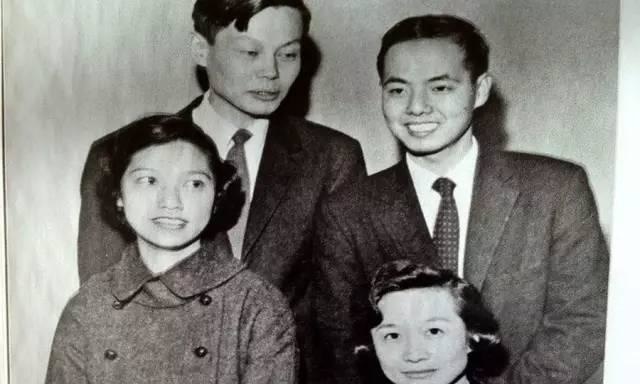
(三)新闻报道中的排名
后来有美国记者写了一篇《宇称问题侧记》来记叙宇称不守恒的发现始末,报道此事。两人仍然因为报道中谁排前面的问题,闹得很不愉快。
从此以后,两人决定停止所有的合作,黄金搭档就这样结束了。当物理学界其他人知道两人因为此事而决裂的时候,都唏嘘不已,觉得实在有点想不通,也太无聊,更是物理学界的重大损失。试想,如果两人能够一直合作下去,后续是不是会有更多可能呢?
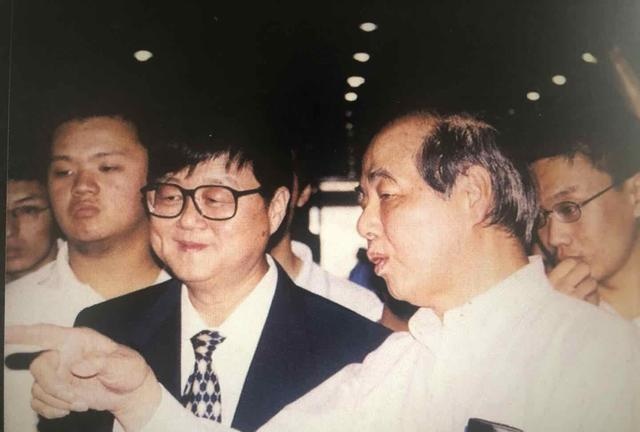
对此,奥本海默非常失望,他之前一直对二人抱以非常高的期望,最后实在难以理解两人会为此而决裂。他最后毫不客气地说:李政道应该不要再做高能物理,而杨振宁应该去看看精神医生。
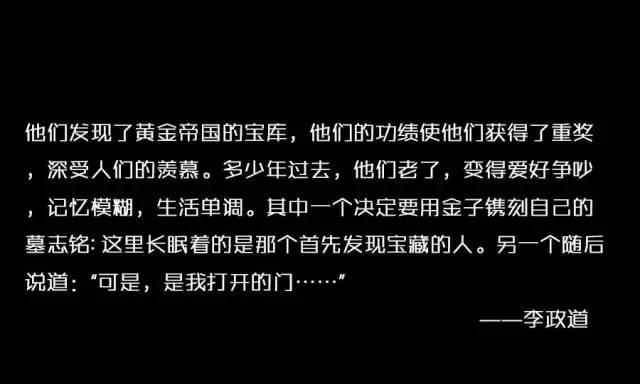
04
当大家还在为两人决裂感到遗憾的时候,没想到这次“分手”却是两人后来事业的分水岭。
我们先来说杨振宁,共同提出宇称不守恒理论并不是杨振宁学术上的巅峰,却仅仅是个开始。杨振宁后来陆续提出了两大理论,即“杨-米尔斯规范场”论(Yang-Mills gauge theory)和提出“杨-巴克斯特方程”,这两大成果对世界物理学的影响更深远。
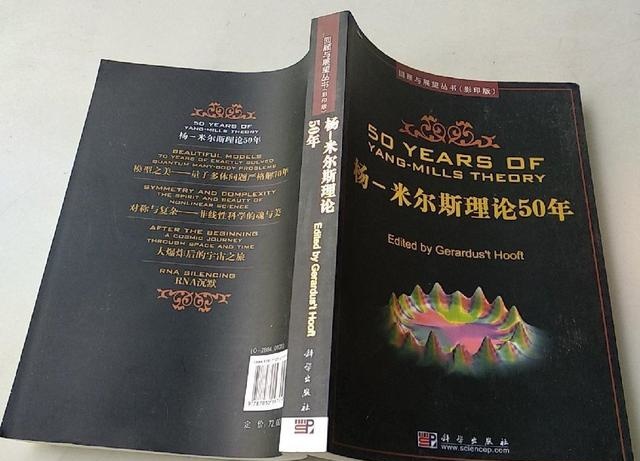
有人这样评价过20世纪世界物理学的发展:“如果说20世纪上半叶爱因斯坦是物理学的旗手,那么下半叶当推杨振宁”。爱因斯坦有第一层次的三大贡献:广义相对论、狭义相对论和光量子说,杨振宁也有同一层次的三大贡献:规范场、杨-巴克斯特方程、弱相互作用宇称不守恒。
杨振宁参与提出的杨-米尔斯方程则推动了微分几何、杨-巴克斯特方程推动了多个数学领域的发展,虽然之后杨振宁再也没有获得诺贝尔奖,但这两个方程却让至少帮助了十来位物理学家获得了诺贝尔奖物理学奖,数学界的菲尔兹奖中,至少有6人是靠推演杨米尔斯方程拿奖的。(1990年国际数学大会上,四位菲尔兹奖获得者中的三位的工作与杨-巴克斯特方程有关)。
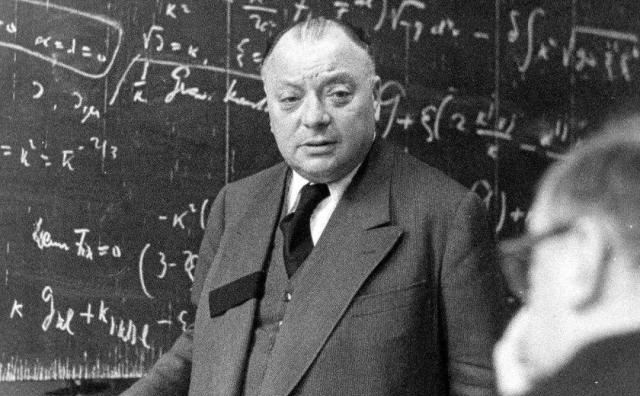
2000年,《自然》杂志评选了近千年来世界著名的20位物理学家,这份榜单包括爱因斯坦、牛顿、麦克斯韦等科学家,其中杨振宁也成功上榜,他是唯一的一位仍然在世的科学家,这是对他成就的肯定。所以,后来有人说杨振宁是当世最伟大的物理学家。

我们再来看李政道,李政道获得诺贝尔奖后,1961年当选为美国科学院院士,1962年加入美国国籍。虽然之后,也发表了许多论文,但再也没有出过特别突出的成果。
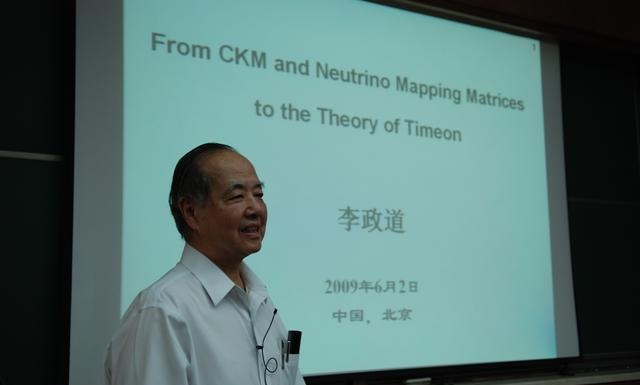
05
杨振宁与李政道的决裂后,江湖上一直流传着两人的”恩恩怨怨“故事,双方各执一词,谁也不服谁。但有一点却是事实,那就是后来的杨振宁成就要比李政道大很多,在世界物理界的影响也存在较大的差距。为什么会出现这么大的差距?
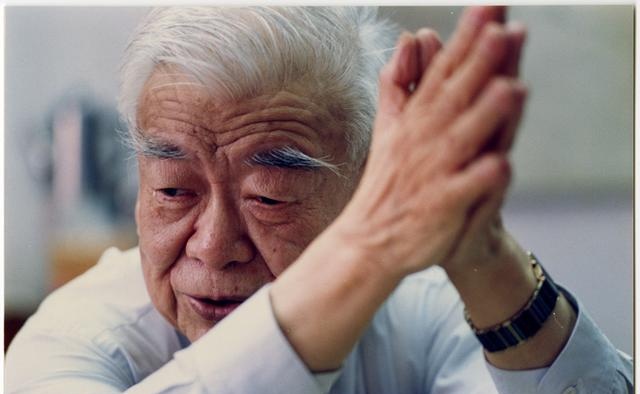
杨振宁曾经写信给他们二人共同的老师,著名的物理学家吴大猷,在这封信中杨振宁首次向吴大猷说明了他和李政道决裂的大致经过。同时,他这样评价李政道,杨振宁直言:
“政道是一个极聪明的物理学家,吸收能力强,工作十分努力。可是洞察力与数学能力略逊一筹,所以1962年以后文章虽写得很多,没有什么特别重要的成就,没有大影响”。
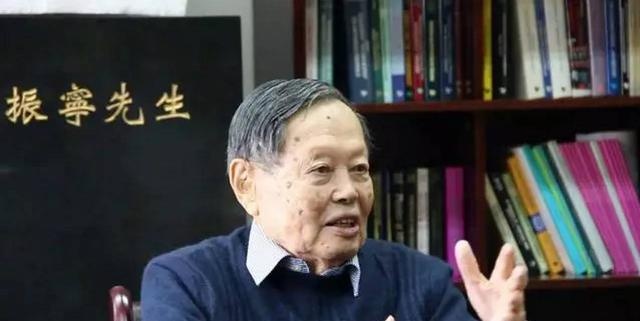
这或许就是杨振宁总结的两人之间为何会在学术上的差距的主要原因。杨振宁认为李政道虽然非常聪明,却在数学计算能力上存在一点缺陷。而杨振宁本人却在数学上有着很深的造诣,他一生的物理工作中都带着美妙的数学风格。

数学对物理研究是非常重要的,因为物理学的研究需要大量的计算。杨振宁是这样看待数学和物理的关系:
我的物理学界的同事们大多对数学采取了功利主义态度,我欣赏数学家的价值观,赞美数学的优美和力量。让人感觉非常奇妙的是,数学中很多美妙概念竟是支配物理世界的基本结构。
很多人都知道,杨振宁有一个非常出名的数学家父亲杨武之,连华罗庚都是他的学生。杨振宁从小受到数学的熏陶,自然不会差。
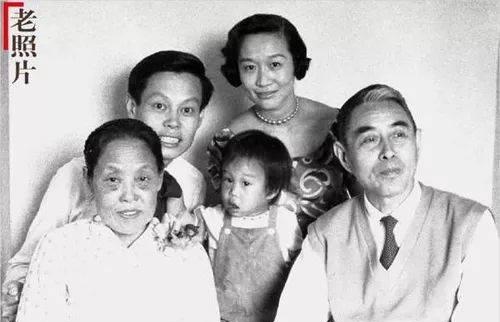
然而,影响杨振宁学习数学的还有一个人,那就是跟杨武之同时期的著名数学家刘薰宇。刘薰宇毕业于北京高等师范(现北京师范大学前身)数理系,是著名的数学家,曾担任过多所学校的数学老师,著有多篇数学著作。他重心不是数学理论研究,而是数学教育。
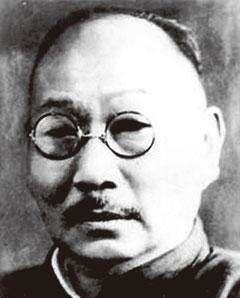
1983年杨振宁在香港演讲时,对香港的中学生谈起了刘薰宇,杨振宁说:有一位刘薰宇先生,他是位数学家,写过许多通俗易懂和极其有趣的数学方面的文章。我记得,我读了他写的关于一个智力测验的文章,才知道排列和奇偶排列这些极为重要的数学概念。”
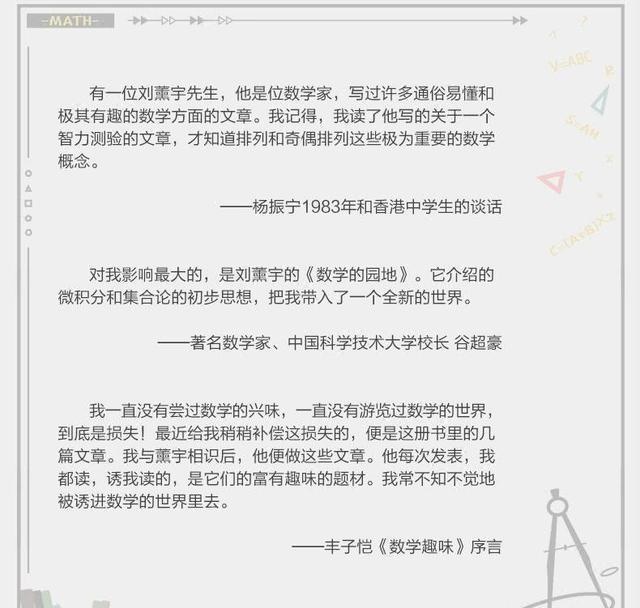
刘薰宇一生创作了很多有关数学有著作,其中最经典的主要包括五本:
1.刘薰宇,《数学趣味》。上海:开明书店,1934
2.刘薰宇,《马先生谈算学》。上海:开明书店,1940
3.刘薰宇,《数学的园地》。上海:开明书店
4.刘薰宇,《因数与因式》。中国青年出版社,1951
5.刘薰宇,《实用微积分》。上海:开明书店,1952
很多人之前可能见过刘薰宇编写的前三本书,即最近网络上热卖的《给孩子的数学三书》。如今经过多方的努力,目前已经找齐了刘薰宇先生的前4本书,即:《数学趣味》《马先生谈算学》《数学的园地》和《因数与因式》,这是非常不容易的。
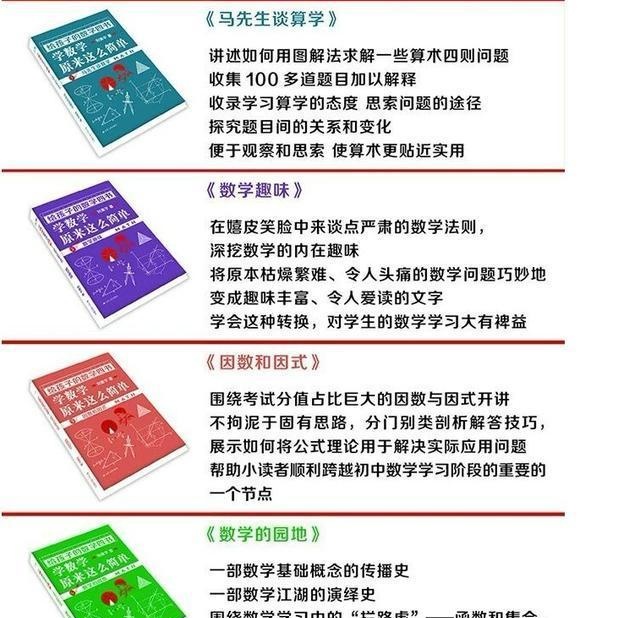
这4本书共同特点就是用生动有趣的语言,将枯燥的数学原理演绎的非常有趣生动,中小学生读完都能感受到数学的趣味性,能够有效激发学习数学的兴趣。很多人读完这套书,有一个共同的感受,那就是学数学原来可以这么简单。
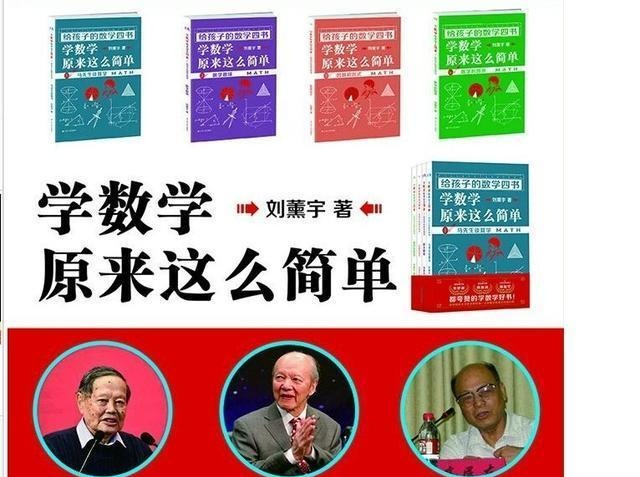
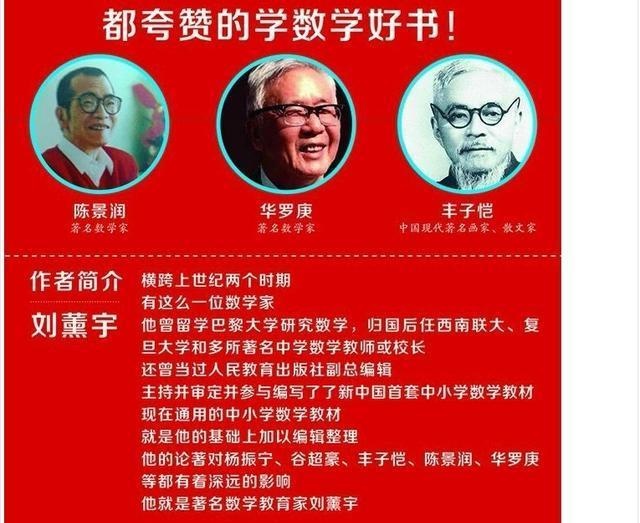
刘薰宇的这套数学科普著作,不仅影响到了杨振宁,谷超豪,齐民友等众多大科学家,同时也是著名的数学家陈景润、华罗庚等人夸赞的数学好书。这套书属于数学科普著作,适用中小学生阅读,对培养学生学习数学的兴趣非常有帮助。
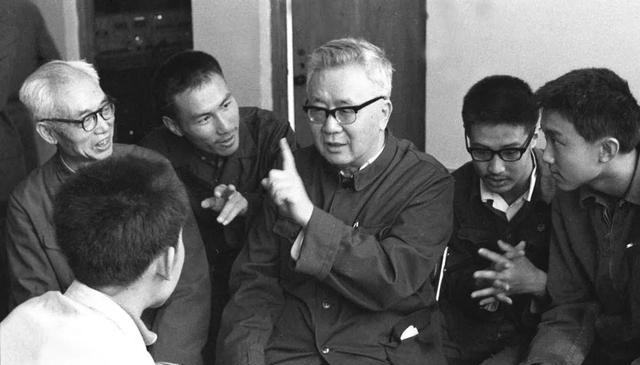
如果你也想培养孩子学习数学的兴趣,热爱数学的朋友,都可以入手一套刘薰宇经典的数学著作。
对于杨振宁和李政道的”恩怨“,你们怎么看?欢迎发表你们的看法。
Li Zhengdao and Yang Zhenning break the storm
INEWS
10/10/2021
In 1957, Li Zhengdao and Yang Zhenning won the Nobel Prize in Physics for discovering the law of non-conservation of parity. At that time, the two Chinese physicists (both were Chinese Taipei nationals at the time of the award) were 31 years old and 35 years old.
Being so young has reached a height that many scientists will never be able to achieve in their lives. The academic community expects that the two young talents in theoretical physics can make greater contributions in the process of cooperating to explore the laws of the universe.
It’s a pity that things backfired, and Li and Yang soon parted ways. The break between the two genius scientists even affected the scientific research and education undertakings of New China.
After the thawing of Sino-U.S. relations in 1972, Li Zhengdao and Yang Zhenning returned to visit the country one after another. Regarding the development of China’s high-energy physics, the two people’s opinions were simply sharp-pointed.
Li Zhengdao attaches great importance to basic scientific research, Yang Zhenning requires freezing basic scientific research funding and focusing on the development of applied scientific research; Li Zhengdao advocates the construction of high-energy accelerators, and Yang Zhenning firmly opposes it.
What caused the two scientists to break so thoroughly? Even Premier Zhou and Deng Gong could not ease their relationship.
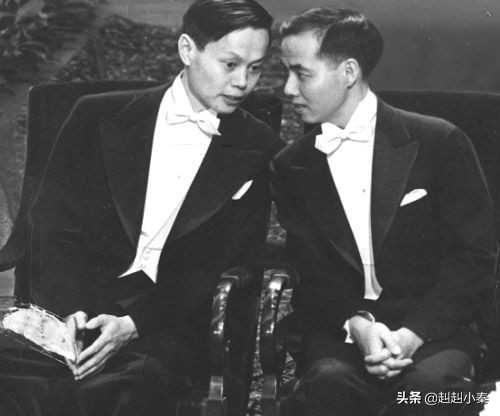
According to the currently public information, the core reason for Li Zhengdao and Yang Zhenning’s break is the issue of the ordering of the signatures of the papers.
In the autumn of 1951, the two co-wrote two papers on statistical mechanics at the Institute for Advanced Study in Princeton, and the response was so great that it attracted Einstein’s attention. In 1952, Einstein invited these two young scholars from China to exchange academic experiences face to face.
Einstein and Li Yang talked for a long time, and at the end they held Li Zhengdao’s hand and said, “I wish you physical success in the future!”
At this time, Li Zhengdao and Yang Zhenning are truly beautiful! But the rift in the relationship between the two began to arise.
According to international practice, the authors’ signatures of co-authored papers should be sorted in alphabetical order of their names. After the first paper “Cohesion Theory” was completed, Yang Zhenning proposed that he was four years older than Li Zhengdao, so he wanted to sign it first.
Li Zhengdao reluctantly agreed, but he was already dissatisfied. The second paper “The Theory of State Equations and Phase Transitions” insisted on following international practice and signed himself before Yang Zhenning.
The signing of the thesis made Li Zhengdao upset. In order to stay away from Yang Zhenning, he left the Princeton Institute for Advanced Study and went to Columbia University as an assistant professor. Later, he became the youngest professor of physics at Columbia University. The lives and scientific research of the two have not overlapped for more than three years.
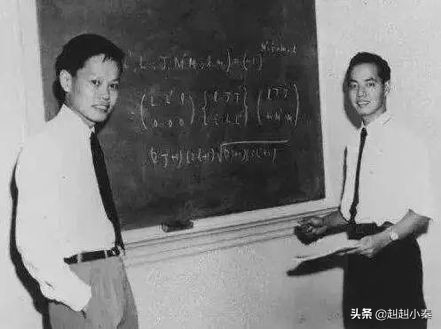
Until 1956, Yang Zhenning went to Columbia University to visit Li Zhengdao. The two argued because of the viewpoints in a paper jointly published by Yang Zhenning and Mills. This dispute sparked an unusual spark. The two re-cooperated and finally jointly won the Nobel Prize in Physics.
Unexpectedly, winning the Nobel Prize aggravated the rupture of the relationship between the two, because when receiving the award, Yang Zhenning again asked to break international conventions and received the award before Li Zhengdao. Yang’s wife, Du Zhili, also asked to appear first when attending the ceremony dinner. It can be accompanied by the King of Sweden, followed by Yang Zhenning, and accompanied by the Queen.
Li Zhengdao strongly opposed, Li’s wife, Qin Huiruo, persuaded him not to make foreigners laugh at such trivial matters. Li Zhengdao reluctantly agreed. This incident made the rift in the relationship between Li Zhengdao and Yang Zhenning even bigger.
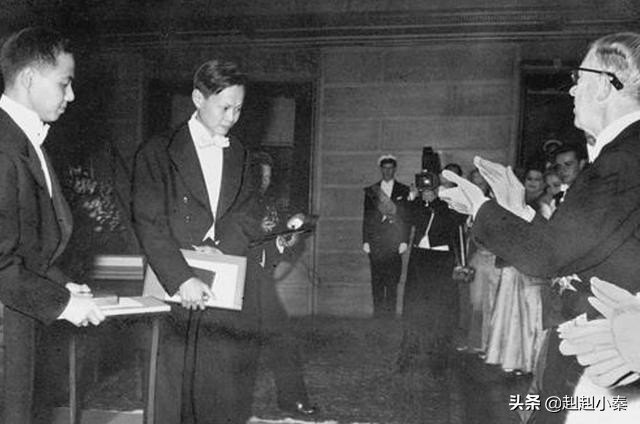
Later, the “New Yorker” magazine published an article titled “Side Notes on the Parity Problem”, which described the story of Li and Yang’s cooperation in discovering the problem of non-conservation of parity.
Li Zhengdao felt that Yang Zhenning’s request was boring, and decided to terminate the academic cooperation between the two. So far, the two completely broke up.
Xiao Qin believes that from the perspective of personality, the break between Li Zhengdao and Yang Zhenning is inevitable.
The character conflict coupled with the scientist’s truthfulness led to a break between the two inevitably.

杨振宁百岁诞辰提邓稼先:后50年我们千里“共同途”
9/23/2021
中国科学院院士、著名物理学家杨振宁昨天在百岁生日研讨会上感怀50年前“两弹元勋”邓稼先写给他的信中提到“但愿人长久,千里共同途”。杨振宁说,“我懂你‘共同途’的意思,我可以很有自信地跟你说,我是后50年合了你‘共同途’的途,相信你也会满意。”
根据“清华大学”微信公众号,杨振宁出席由清华大学、中国物理学会、香港中文大学主办的“杨振宁先生学术思想研讨会——贺杨先生百岁华诞”时回忆了自己1971年第一次访问中国的感受和经历。
杨振宁说,自己是50年前第一次访问中国,那个访问是人生中非常非常重要的访问,因为使他对于中国第一次有了一点认识,这个认识对于以后50年的人生轨迹有着非常大的影响。那次访问,他见了参与中国原子弹制造、同时是自己多年好友的邓稼先。
杨振宁回忆说,中国的原子弹爆了之后,美国的报纸很快就有种种的消息,其中一项说是涉及中国原子弹的重要人物,就有邓稼先。他说,邓稼先是他的中学、大学、在美国的知心朋友,他们的关系不止是学术上的关系,也超过了兄弟的关系。
杨振宁忆述当时美国报纸称中国主席毛泽东派了个飞机到陕北,去找美国的一个叫做寒春(编者注:寒春的英文名为Joan Hinton,核物理学家,1921年10月20日出生在芝加哥,2010年6月8日去世)的物理学家到北京去帮助中国制造原子弹。
杨振宁很想知道这个消息是不是对的,想知道中国的原子弹是不是中国人自己造出来的,因此在1971年访问尾声,就此询问了到机场送机的邓稼先。
邓稼先在和组织确认后被告知,没有外国人参加中国原子弹的制造,除了在最先的时候略微有一些苏联人的帮助,后来基本上是中国人自己做的。于是通过书信的方式把这个消息告诉了杨振宁。
邓稼先在信中还说,这次和杨振宁见面几次,心里总觉得缺点什么东西似的,细想起来是有“友行千里心担忧”的感觉。因此心里总是盼望着“但愿人长久,千里共同途”。
杨振宁说,当时没有看懂这句话,但想了想,知道“千里共同途”是一个很深的意思。
杨振宁接着说,最近看到他这封信发表在一本新书里(注:指2021年修订版的《晨曦集》),仔细看了以后,在时隔50年后想跟邓稼先说,“稼先,我懂你的‘共同途’的意思,我可以很有自信地跟你说,我是以后50年是合了你‘共同途’的途,我相信你也会满意。再见。”
杨振宁百岁诞辰发表演讲:但愿人长久,千里共同途
9/23/2021
为庆祝杨振宁先生百岁诞辰,9月22日下午,由清华大学、中国物理学会、香港中文大学联合主办的杨振宁先生学术思想研讨会——贺杨先生百岁华诞在清华大学举行。会上,杨振宁先生以“但愿人长久,千里共同途”为题发表了讲话,特刊登全文,以飨读者。
但愿人长久,千里共同途
——在杨振宁学术思想研讨会
(贺杨先生百岁华诞)上的讲话
杨振宁
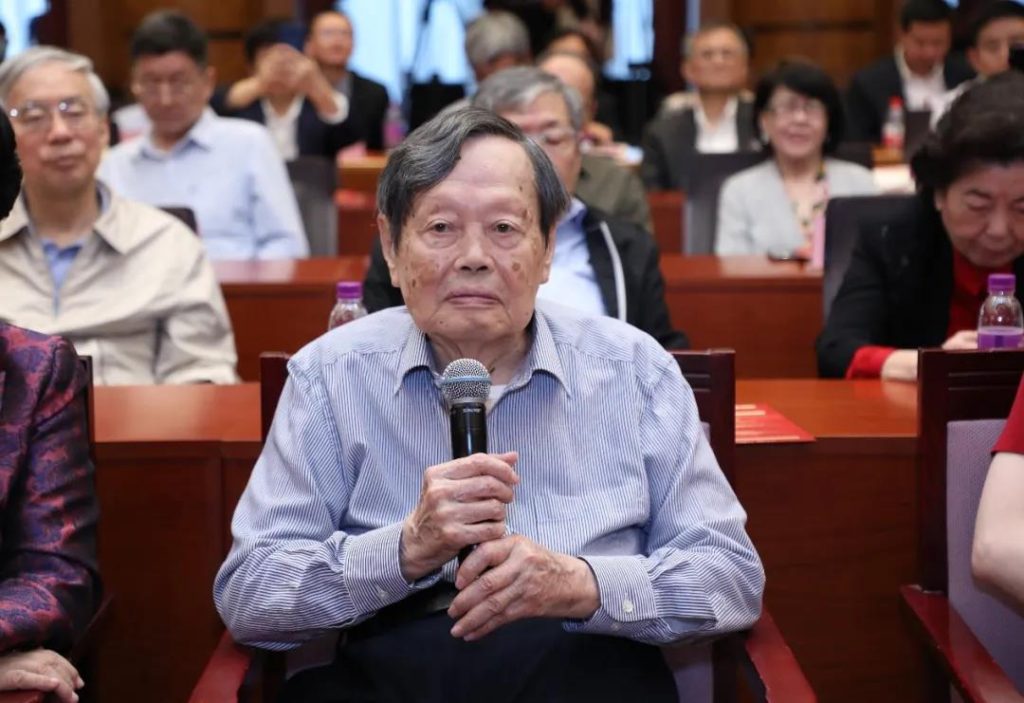
各位首长、各位来宾、各位朋友、各位亲戚:
我非常感谢清华大学、香港中文大学跟中国物理学会合办的庆祝我农历一百岁的生日。我没有想到你们请到了这么多人,跟我在不同的时候有过很多交往。我是整整五十年以前,1971年第一次访问新中国。那个访问是我人生中非常非常重要的一段,因为使得我对于新中国第一次有了一点认识,而这个认识对于以后50年我的人生轨迹有了非常大的影响。
那次访问除了看了住院的父亲以外,我还看见了很多亲戚和朋友,其中最重要的也是我最亲近的朋友就是邓稼先。他1971年给我写的一封信,最近发表在一本书里头,这里头的故事是这样的,中国原子弹爆了以后,美国的报纸很快有种种的消息。其中一项我注意到,说是设计中国原子弹的人物里头有邓稼先。邓稼先是我中学、大学、在美国的知心朋友,我想他跟我的关系不止是学术上的关系,也超过了兄弟的关系,所以对于这个消息我当然非常注意。另外一个消息我也注意到,是美国报纸上说毛主席派了飞机到陕北把美国物理学家寒春接到北京帮助中国制造原子弹。我认识寒春是因为我跟她在芝加哥大学同一个实验室工作了20个月,而且她还要我教她中文。她没有告诉我为什么,一直到1948年3月她告诉芝加哥大学系里所有的老师、学生,说她要到中国去跟她的男朋友结婚,在陕北。
因为这个缘故我一直很想知道这个消息是不是对的,很想知道中国的原子弹是不是中国人自己造出来,没有经过外国人的帮忙。所以我在1971年4个礼拜的访问之中就非常想问这些问题,问寒春参加中国的原子弹故事是真的还是假的?可是这是一个敏感的问题,所以我又不敢问。最后在北京几个礼拜后,我要到上海去,从上海再过几天就要飞回美国。在离开北京的时候,也是去飞机场的时候,邓稼先送我。那个时候北京的飞机场很简单,所以他陪我一直走到飞机的楼梯底下。我实在憋不住了,我问他寒春有没有参加中国原子弹的设计?他说他觉得没有,不过他说要跟组织上认证一下然后告诉我。
所以那天他就去跟组织接触了,组织告诉他没有外国人参加中国原子弹的制造,除了在最先的时候略微有一些苏联人的帮助,后来基本上是中国人自己做的。他就写了一封信,这封信在第二天派专人到上海,到的时候我在上海大厦,在吃饭的时候信差送来了这封信,这封信现在已经出版在我的一本新书里头。这个信如果仔细看很有意思,因为它除了讲他验证了中国的原子弹基本没有外国人参与,当然没有寒春。这封信后边还有几段显示得很清楚,他在那几个礼拜里跟我见过好多次,他有想跟我说的话说不出来,所以他在信的尾巴上描述了一下他想要跟我讲什么,可是不知道怎么讲。在这个信的最后他这样给了我一个期望,是“但愿人长久”,他把“千里共婵娟”改了一下,变成“千里共同途”,当时我看了信以后没有看懂这句话。“千里共同途”是什么意思呢?我后来想了想,知道这是一个很深的意思。最近这个信发表了以后,仔细看了以后,我觉得今天五十年以后,我可以跟邓稼先说:稼先,我懂你“共同途”的意思,我可以很自信地跟你说,我这以后五十年是符合你“共同途”的瞩望,我相信你也会满意的。再见!
习近平委托教育部负责同志看望杨振宁
新京报
9/23/2021
据新华社北京9月22日电 受中共中央总书记、国家主席、中央军委主席习近平委托,教育部负责同志9月22日到清华大学看望中国科学院院士、著名物理学家杨振宁,代表习近平赠送花篮,转达习近平对他百岁生日的祝福,祝愿他健康长寿。
杨振宁1922年9月22日出生于安徽合肥,上世纪40年代赴美留学任教。1957年,因提出弱相互作用中宇称不守恒原理与李政道一起获得诺贝尔物理学奖。他提出的“杨-米尔斯规范场”论是20世纪物理学最为重要的成就之一。2003年起,杨振宁回国定居并在清华大学任教,在培养和延揽人才、促进中外学术交流等方面作出重要贡献。
Yang Zhenning’s 100th Birthday Speech: No Foreigners Participated in China’s Atomic Bomb Manufacturing
MINNEWS
9/23/2021
To celebrate the 100th birthday of Mr. Yang Zhenning, on the afternoon of September 22, Mr. Yang Zhenning’s academic thought seminar-Mr. He Yang’s 100th birthday, co-sponsored by Tsinghua University, the Chinese Physical Society, and the Chinese University of Hong Kong, was held at Tsinghua University.
At the meeting, Mr. Yang Zhenning delivered a speech under the theme of “I hope that people will be long, a journey of thousands of miles”, and the full text was published specially for readers.
I hope people will be long and have a common journey for thousands of miles
——At the seminar on Yang Zhenning’s academic thoughts
(Mr. He Yang’s 100th Birthday) Speech
Yang Zhenning

Dear leaders, guests, friends, and relatives:
I am very grateful to Tsinghua University, the Chinese University of Hong Kong, and the Chinese Physical Society for celebrating my 100th birthday in the lunar calendar. I didn’t expect that you invited so many people and had many contacts with me at different times. I visited New China for the first time in 1971 exactly fifty years ago. That interview was a very, very important part of my life, because it gave me a little understanding of New China for the first time, and this knowledge will have a very big impact on my life trajectory in the next 50 years.
In addition to seeing my father who was hospitalized during that visit, I also saw many relatives and friends. The most important and closest friend was Deng Jiaxian. A letter he wrote to me in 1971 was recently published in a book. The story here is like this. After the Chinese atomic bomb went off, American newspapers soon had various news. Among them, I noticed that Deng Jiaxian was among the characters who designed the Chinese atomic bomb. Deng Jia is a close friend of my middle school, university, and in the United States. I think his relationship with me is not only academic, but also surpassing the relationship between brothers, so of course I pay much attention to this news. I have also noticed another piece of news. It was said in the American newspapers that Chairman Mao had sent a plane to northern Shaanxi to bring the American physicist Han Chun to Beijing to help China build an atomic bomb. I know Hanchun because I have worked in the same laboratory as the University of Chicago for 20 months, and she wants me to teach her Chinese. She didn’t tell me why, until March 1948 she told all the teachers and students in the University of Chicago department that she was going to China to marry her boyfriend in northern Shaanxi.
Because of this, I have always wanted to know if the news is right, and I really want to know if China’s atomic bomb was made by the Chinese themselves without the help of foreigners. So during my four-week visit in 1971, I really wanted to ask these questions. Is the story about Hanchun’s participation in China’s atomic bomb true or false? But this is a sensitive question, so I dare not ask. Finally, after a few weeks in Beijing, I will go to Shanghai and fly back to the United States in a few days from Shanghai. When I left Beijing, but also when I went to the airport, Deng Jia sent me first. At that time, the airport in Beijing was very simple, so he accompanied me to the bottom of the flight stairs. I really couldn’t hold back anymore, I asked him if Hanchun participated in the design of the Chinese atomic bomb? He said that he didn’t think so, but he said he wanted to get certification with the organization and then told me.
So he went to contact the organization that day, and the organization told him that no foreigners participated in the manufacture of China’s atomic bomb , except for a little help from the Soviets at the beginning, and later it was basically done by the Chinese themselves. He wrote a letter. The letter was sent to Shanghai the next day. When I arrived, I was in the Shanghai Building. The messenger sent this letter during the meal. This letter has now been published on my one. Inside this new book. This letter is very interesting if you read it carefully, because it says that it verifies that China’s atomic bomb basically has no foreign participation, and of course there is no cold spring. There are a few paragraphs at the end of this letter that are very clear. He has seen me many times in those few weeks, and he has something to say to me, so he can’t say what he wants to say. What do you want to tell me, but I don’t know how to tell. At the end of this letter, he gave me an expectation like “I hope people will last forever”. He changed the “A Thousand Miles Together Chanjuan” into “A Thousand Miles of Common Journey”. I didn’t understand this after reading the letter. Sentence. What does “a common journey of thousands of miles” mean? I thought about it later and knew that this was a deep meaning. After the publication of this letter recently and after reading it carefully, I feel that fifty years from today, I can say to Deng Jiaxian: Jiaxian, I understand what you mean by “common way”, and I can confidently tell you that I am The next fifty years are in line with your “common path” expectations, and I believe you will also be satisfied. goodbye!
Xi sends birthday wishes to physicist
By CAO DESHENG | CHINA DAILY
9/23/2021

President Xi Jinping extended his best wishes to Yang Zhenning, also known as Yang Chen-ning, a physicist and academician of the Chinese Academy of Sciences, as Yang celebrated his 100th birthday on Wednesday.
Xi, who is also general secretary of the Communist Party of China Central Committee and chairman of the Central Military Commission, asked officials from the Ministry of Education to visit Yang at Tsinghua University and present a flower basket to the scholar on Xi’s behalf, wishing Yang a healthy and long life.
Yang received the Nobel Prize in Physics together with his colleague Tsung-dao Lee in 1957 for their theory of parity non-conservation in weak interaction.
杨振宁百岁生日现场照公开,翁帆在旁悉心照料,十指紧扣甚是恩爱
9/23/2021
9月22日,是著名物理学家杨振宁的99岁生日,按照民间“过九不过十”的旧俗,这就是百岁寿辰,人生灿烂,岁月不暗。
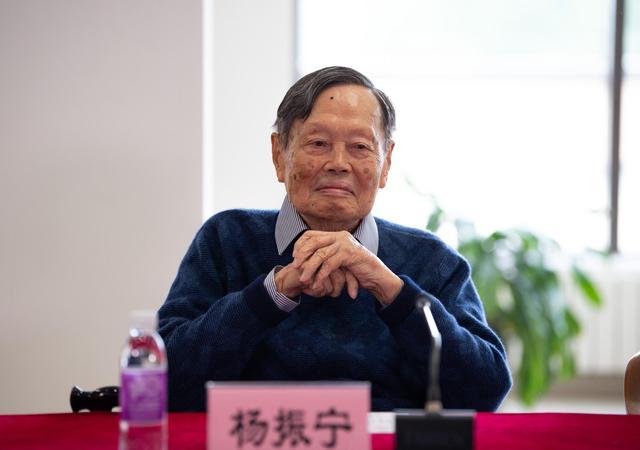
为了庆祝杨振宁的百岁诞辰,生日当天下午,由清华大学、中国物理学会、香港中文大学联合主办的杨振宁先生学术思想研讨会——贺杨先生百岁华诞在清华大学举行。
会上,杨振宁先生以“但愿人长久,千里共同途”为题发表了讲话。
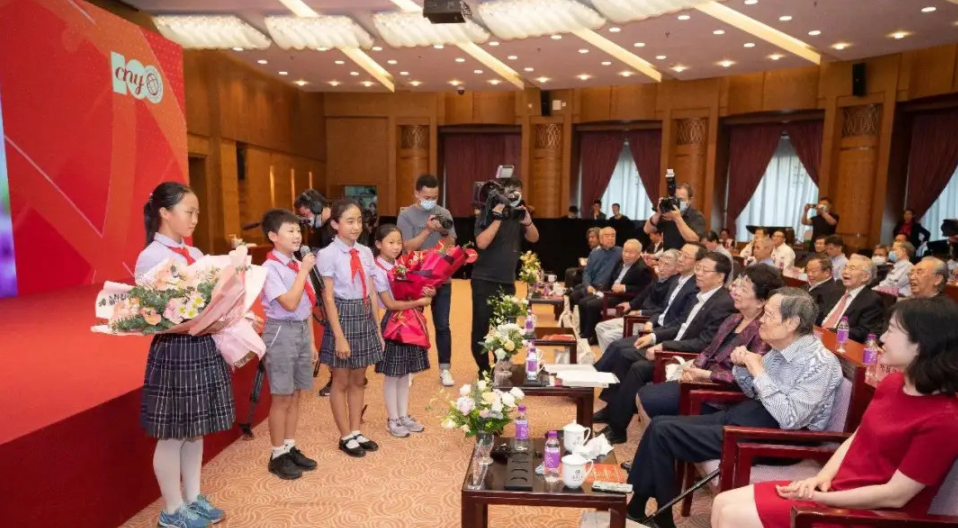
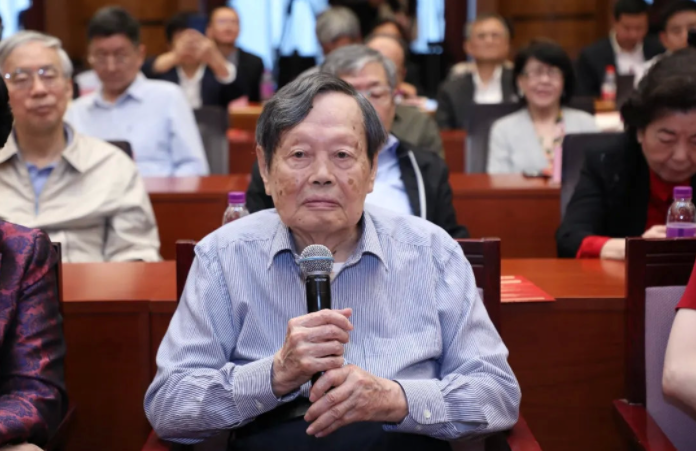
在长达数十分钟的讲话中,与邓稼先先生的经历尤为感人。
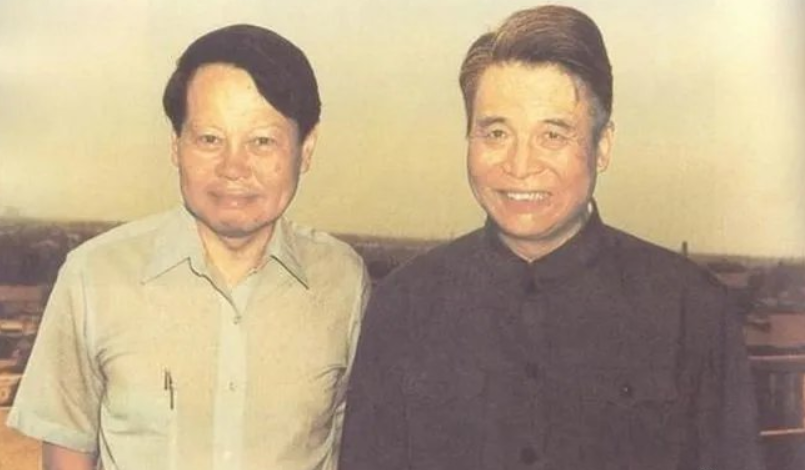
在70年代杨振宁先生访中的时候,与好友邓稼先先生再三确认,中国的原子弹制造靠的是国人自己。

邓在给杨的信的最后有一个期望:但愿人长久,千里共同途。当时不懂什么意思,但是如今他懂了:稼先,我懂你“共同途”的意思,我可以很自信地跟你说,我这以后五十年是符合你“共同途”的瞩望,我相信你也会满意的。再见!
Six Spaces Home Staging

Contact: Hongliang Zhang
Tel: 571-474-8885
Email: zhl19740122@gmail.com
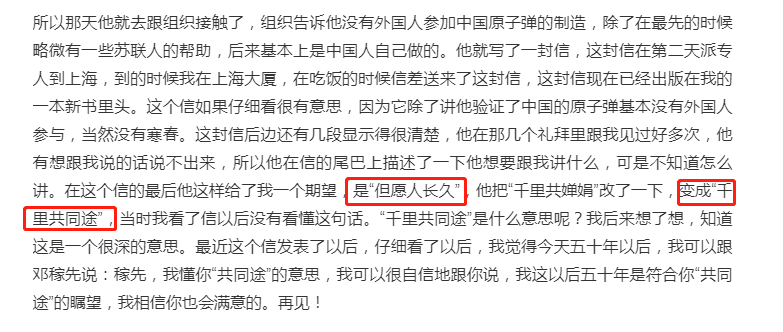
杨振宁先生是伟大的物理学家,他的主要物理学贡献有:宇称不守恒定律(1957年获得诺贝尔奖),杨-米尔斯的规范场论(最伟大的成就,比肩相对论的成就),提出相变理论,发现玻色子多体问题,提出非对角长程序,提出时间反演、电荷共轭和宇称三种分立对称性。

之后再众人的簇拥下以及妻子翁帆的搀扶下,杨振宁前往生日会现场。通过图片可以看出,杨振宁佝偻已经很严重,据说身体各项机能都还正常,就是听力有点减退。
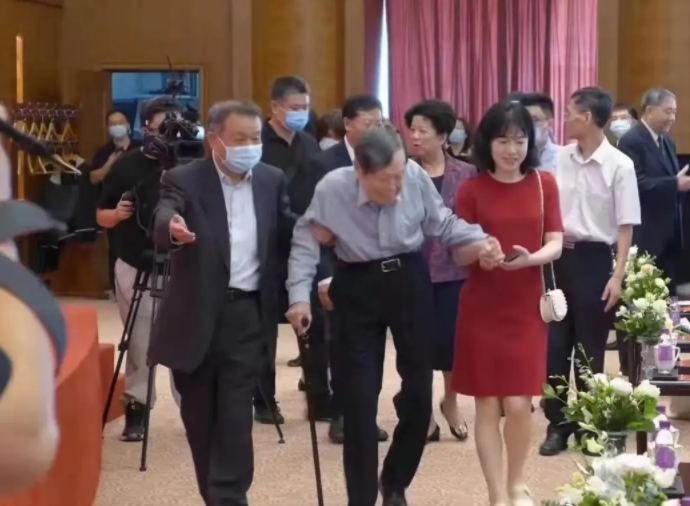
杨振宁是一个科学高度,百岁高龄能受到如此高的重视。即使是站起来的时候,也还是紧握着翁帆的手,甚是恩爱。
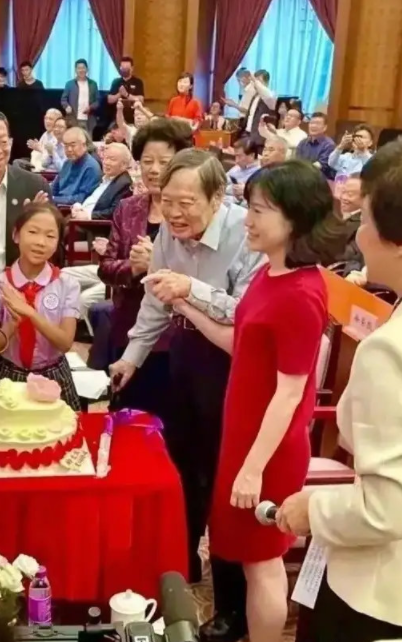
对于杨振宁,我们或许有误解,对于他的了解,花边新闻甚至比科学成就要高。
当初杨先生娶翁帆的时候,外界不仅不看好还攻击。后来杨老说他与翁帆的爱情在多年之后会成为童话。
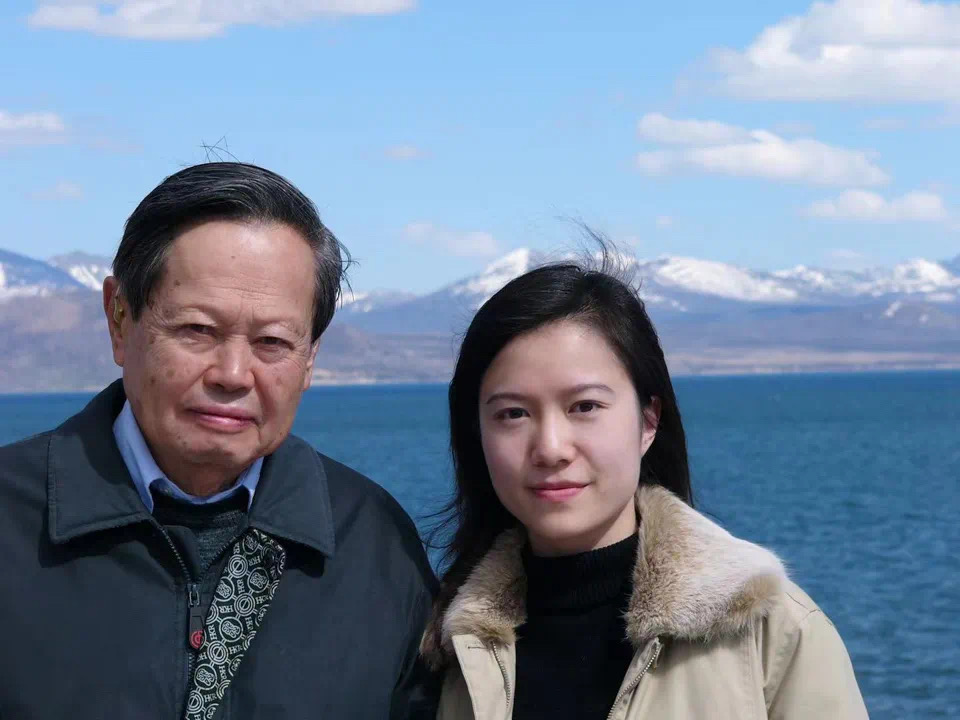
在杨先生百岁诞辰这天,商务出版社出版了《晨曦集》的增订版。增订版中添加了很多关于杨振宁夫妇的爱情故事。

通过翁帆的文字,我们发现了不一样的杨振宁先生,他喜欢尝试,热爱新鲜事物,喜欢冒险。在一篇散文中,翁帆讲述了她驾驶汽车与杨先生开车走山路去山顶的故事。翁帆如履薄冰,手心出汗,而杨先生在一旁则是神情自若。

杨振宁曾表示,翁帆是上天给予她的礼物,他积极锻炼身体,争取陪伴她更多时间。


